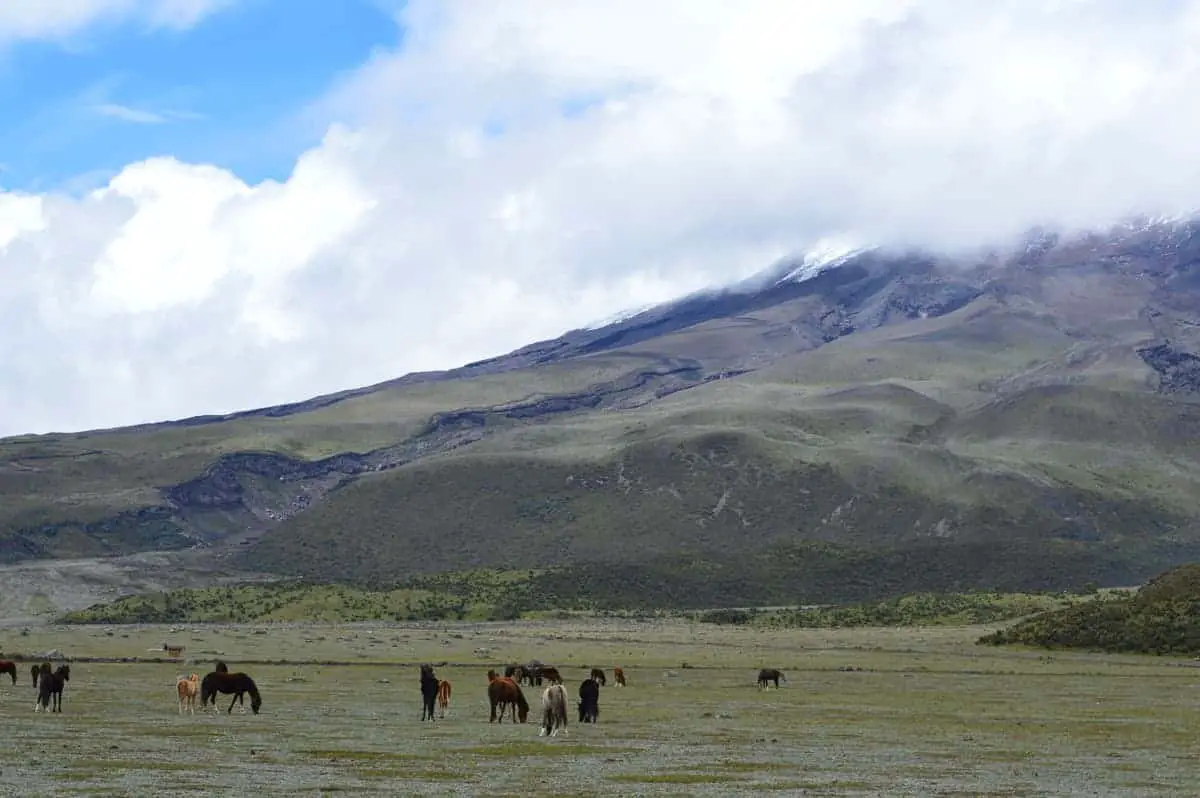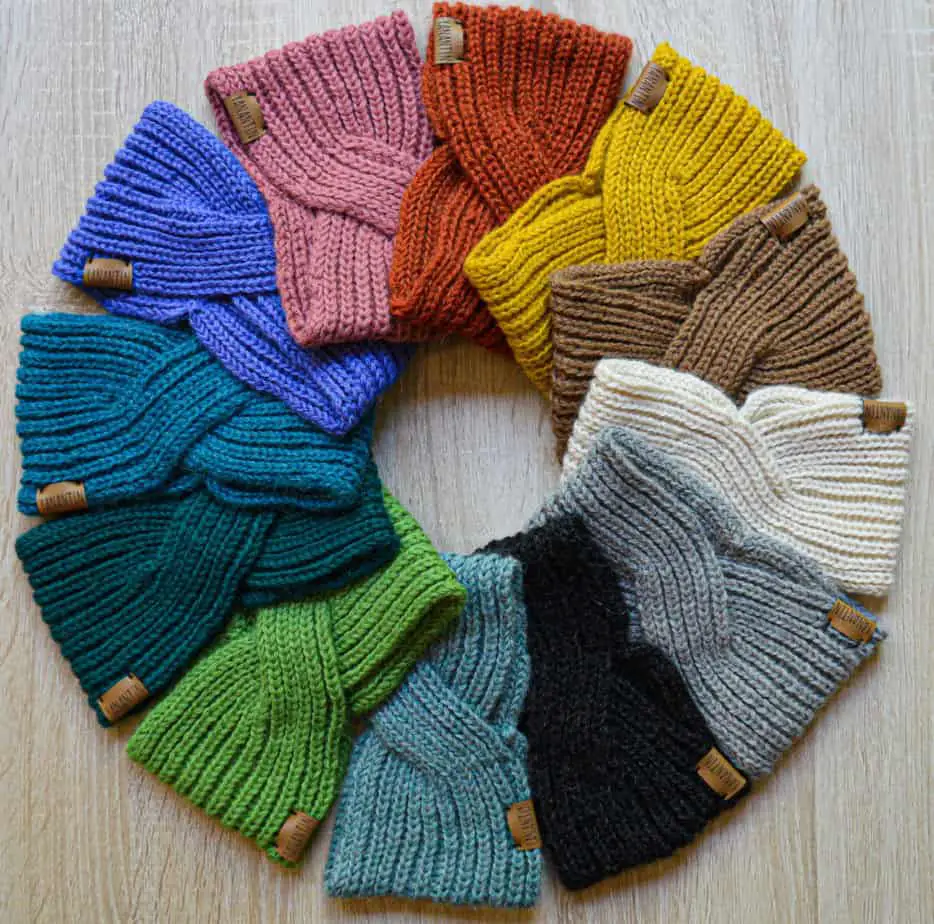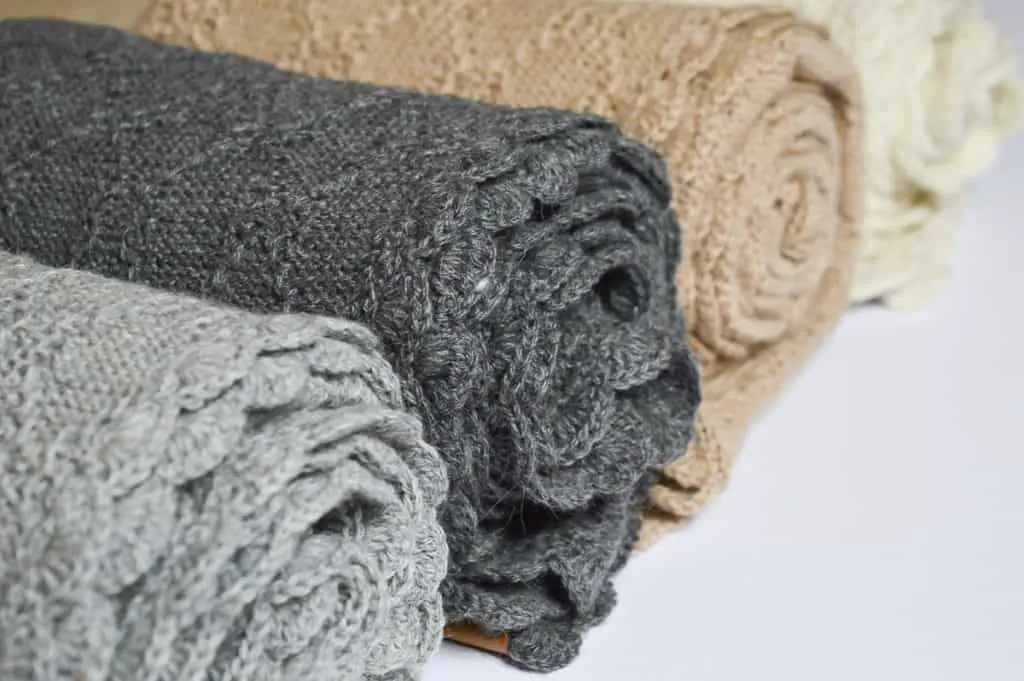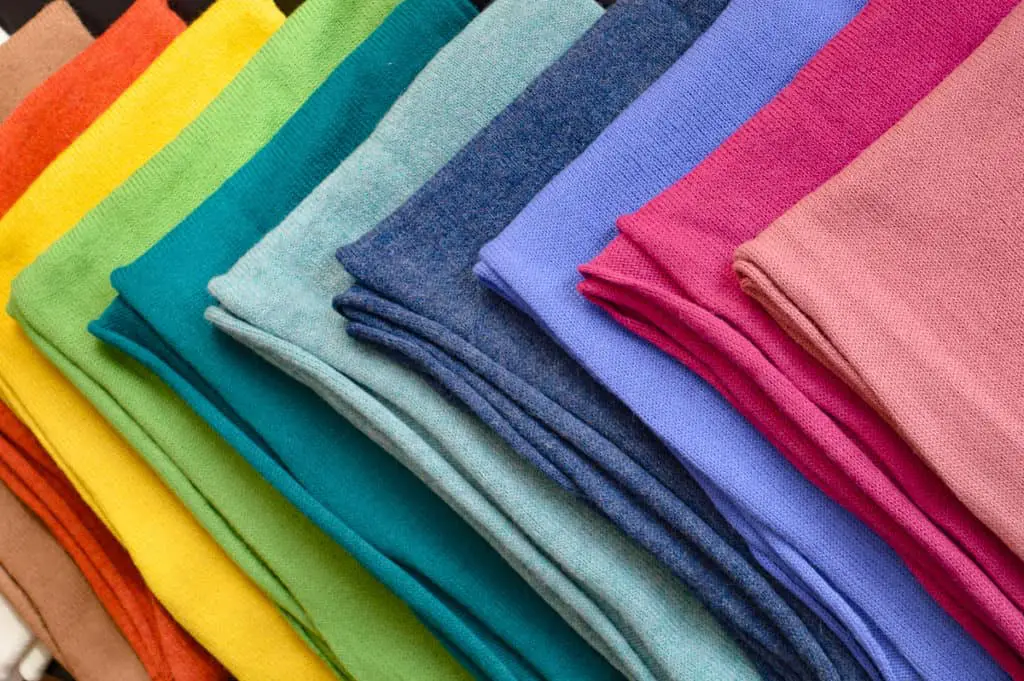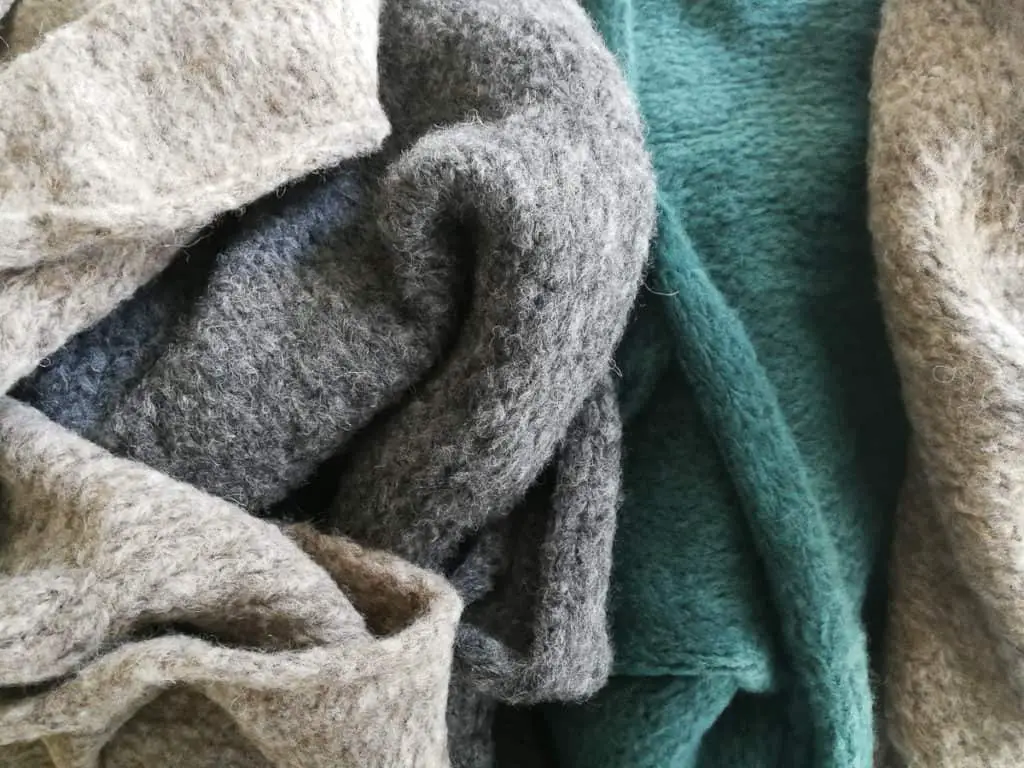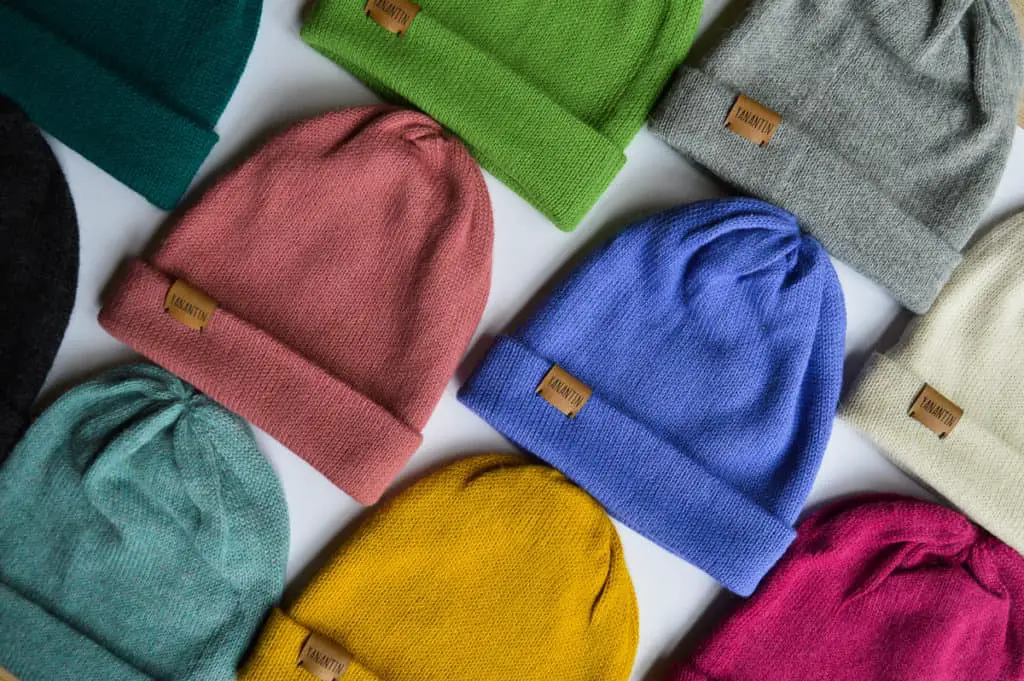Alpaca wool is incredibly warm – much warmer than sheep’s wool, even! But a fiber that is so warm must be clammy, right? Well, let’s find out if alpaca wool is breathable or not.
where can i buy Lyrica tablets Alpaca wool is very breathable, while still being insulating and isolating at the same time. Thanks to its hollow fiber the air is trapped inside micro-pockets. These micro-pockets help to regulate the temperature and airflow and prevent an alpaca woolen garment from being clammy or airtight.
So wait, how does that work? Breathable, while still being warm and insulating at the same time!? Let’s have a look at it in more detail.
How Does Breathability for Alpaca Wool Work?
do you need a prescription to buy disulfiram Alpaca wool is breathable because it has a hollow fiber that can absorb sweat and vapor when the body underneath the garment is heating up. When sweat and vapor are absorbed by the fiber, they get evaporated back into the air.
So, for alpaca wool, breathability works as follows:
- Alpaca wool keeps the cold on the outside of the garment (isolating)
- Alpaca wool maintains warmth on the inside of the garment (insulating)
- Alpaca wool regulates the temperature when it gets too hot (thermoregulating)
- The body produces sweat when it is hot to cool the body down (due to temperature changes or increased activity)
- Alpaca wool absorbs sweat in its fiber (moisture absorption)
- The sweat is evaporated from the fiber into the air to keep the fabric dry (breathability)
Breathability refers to the ability of a fabric to allow moisture vapor to be transmitted through the material.
Wikipedia
One important part of breathability is to absorb moisture. Alpaca wool has great absorbtion: it can absorb up to 30% of its own dry weight! (More in Cameron Holt’s article). After the moisture gets absorbed, the fiber evaporates it back into the air.
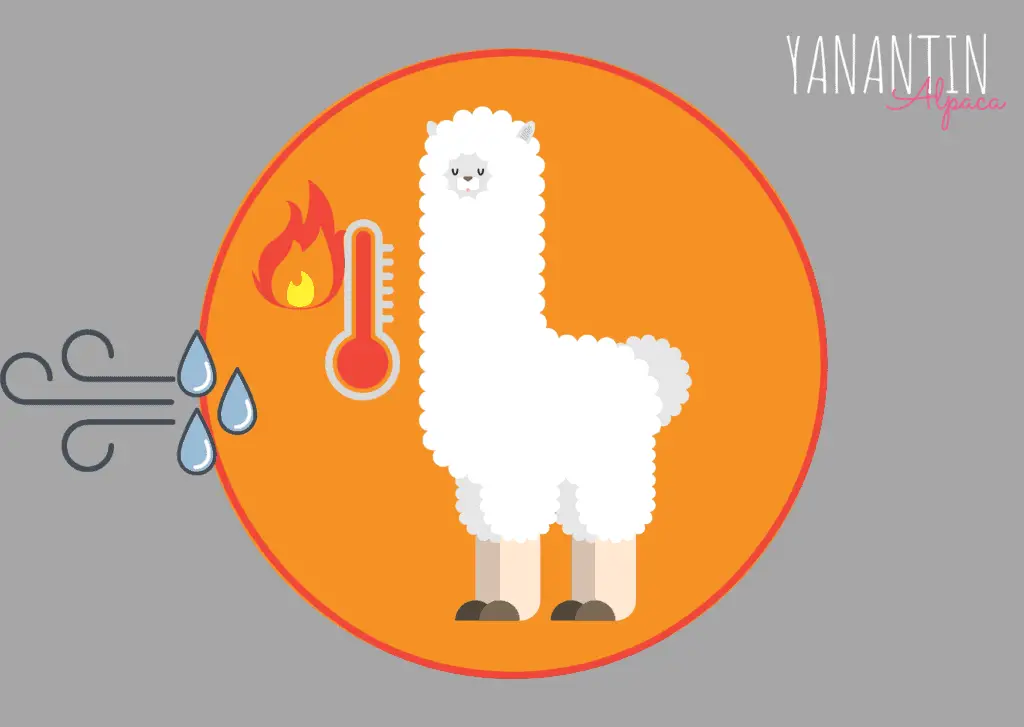
This is what makes alpaca woolen garments breathable, while still being comfortable. The special thing about alpaca wool is that it is breathable, without losing its ability to keep you warm.
- Breathability is important for the comfort of a fabric. Nobody likes wearing clammy fabrics that make you sweat when it gots hot or when you start being active. Breathability is what makes a garment comfortable to wear.
Is Alpaca Wool Insulating?
Many fabrics that are breathable, are not very warm, like cotton and linen for example. So what about alpaca wool? How can it be breathable while still keeping your body warm?
Alpaca wool is warm because it is insulating. When you wrap your body in alpaca woolen clothing, it will keep you warm.
Insulating means that it keeps things in, like heat and a consistent temperature.
When something is insulated, you could say that a layer protects something from changing temperatures. Imagine a house: when it is cold outside, you put the heater on inside. A well-insulated house will maintain the warmth of the heater, without letting the heat escape.
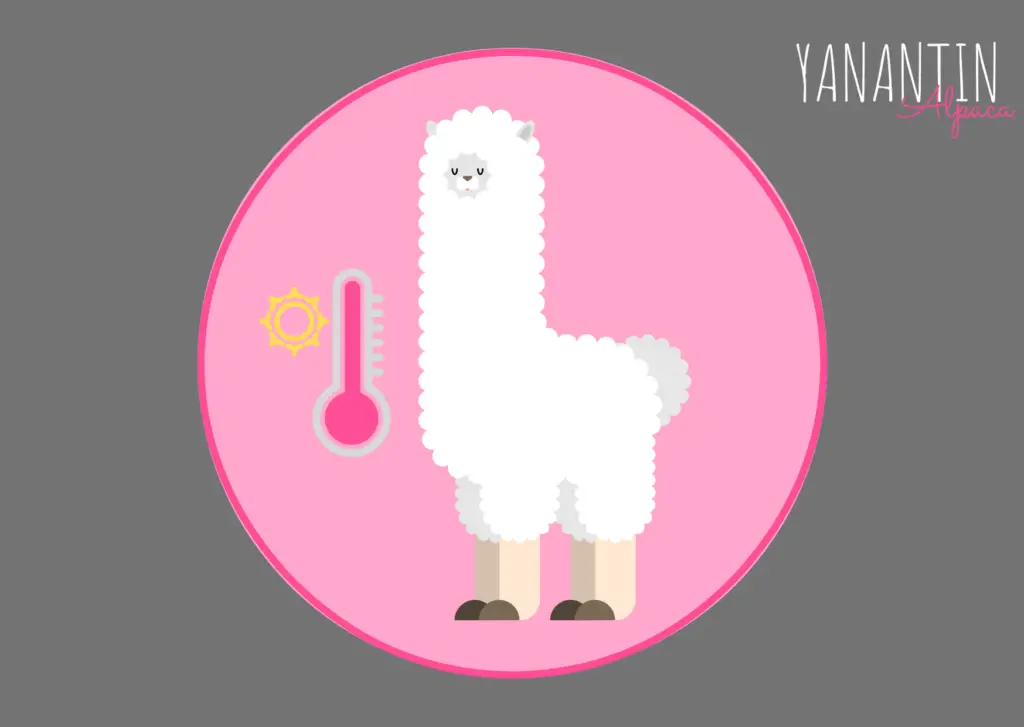
Alpaca wool does the same thing. If you’re cold, or it is cold outside, you put on an alpaca woolen sweater. Your body temperature will make sure it is warm inside the sweater. The warmth will stay inside of the sweater because the insulating layer (made of alpaca wool) doesn’t let the heat out.
- Your body temperature of approximately 98.6°F (37°C) will generate a very comfortable temperature for you underneath an alpaca woolen sweater.
Is Alpaca Wool Isolating?
So, does that mean that alpaca wool only keeps you warm?
Apart from being insulating, alpaca wool is also isolating so it can protect you from external weather conditions, like cold weather.
Isolating means that it keeps things out, like cold and wind.
For a sweater, this means that the cold air will not penetrate the warm layer of alpaca wool and the body heat inside it. Alpaca wool is therefore perfect to wear when it is cold outside!
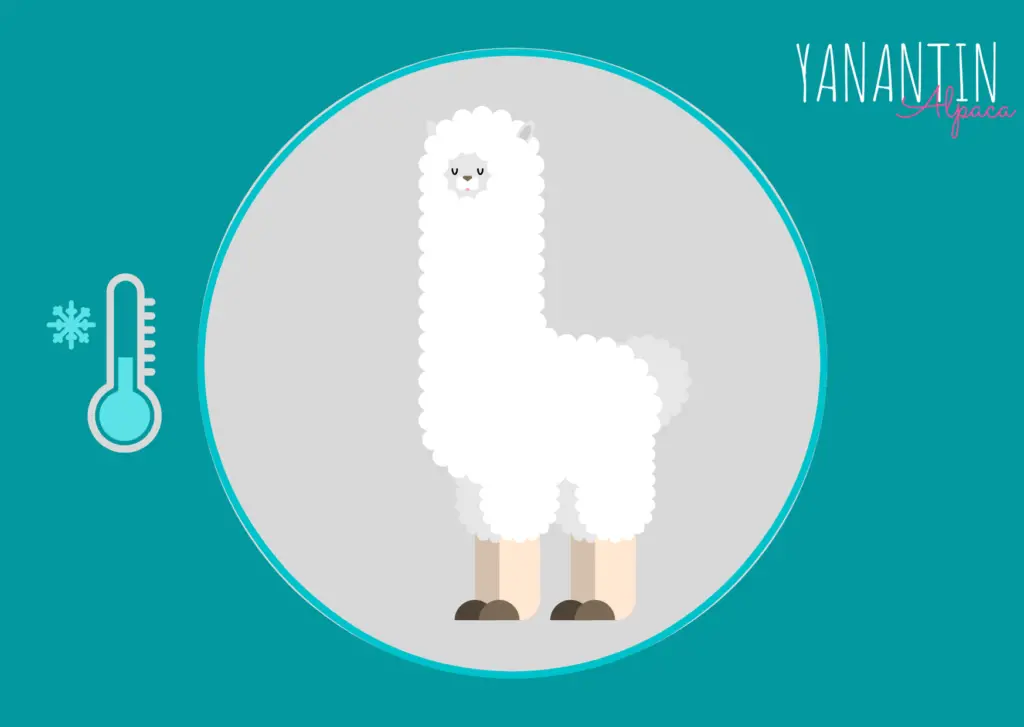
Let’s compare alpaca wool to a house again: when it is cold outside and you put the heater on, you don’t want the heat to escape. On the other hand, you also don’t want the cold to affect the heat, either, because that would mean you need a bigger heater!
Alpaca Wool Is Isolating In Both HOT and COLD Weather!
So, does that mean you can only wear alpaca wool when it is cold?
Isolation works not just in cold conditions, but also for heat that wants to penetrate the protective layer of alpaca wool.
- Alpaca wool is isolating in both hot and cold weather conditions.
Think of the white houses in Greece: the white paint isolates the heat from the sun, so that it stays cool inside.
If a house weren’t insolating, it would mean that the heat would flow away into the cold. A well-insulated house, however, is made to prevent that from happening. On the other hand, a well-isolated house also protects the warmth inside from the “attacking cold” outside.
Warmth will not penetrate the wool, which means that you can wear alpaca in summer, too.
Imagine it is warm outside and you are wearing a sweater. Normally, sunbeams will heat up whatever they touch, so you would expect to be broiling inside your sweater within no-time. However, the isolating capabilities of the alpaca fiber will prevent this from happening.
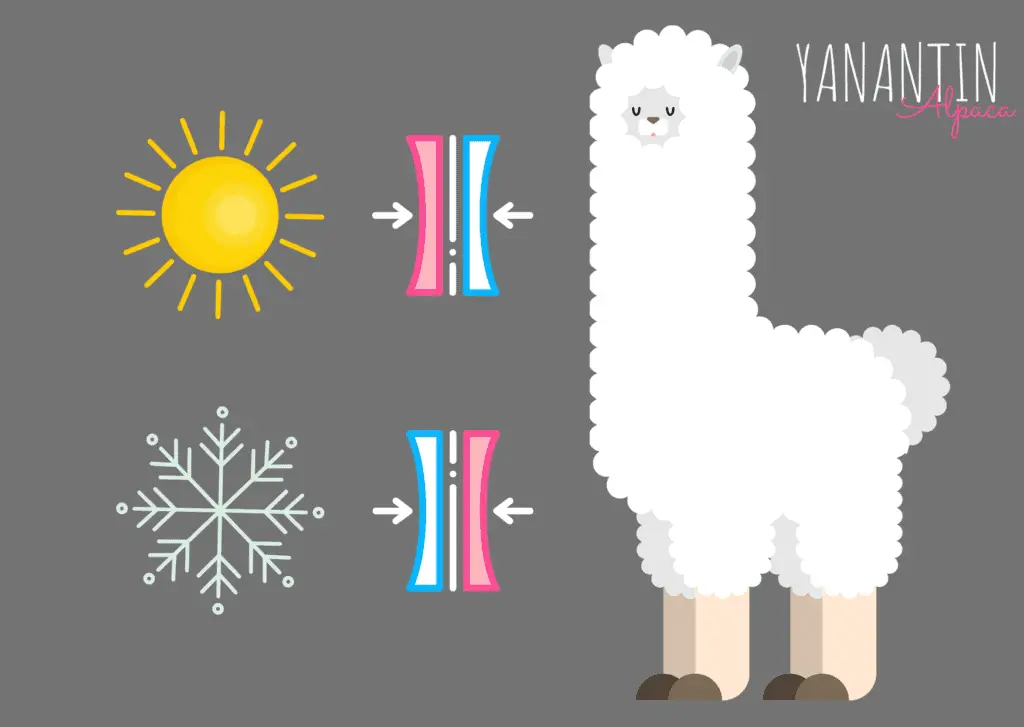
The layer of alpaca wool isolates the heat and protects you from high temperatures at the same time.
Is Alpaca Wool Thermoregulating?
So, how does alpaca wool regulate temperature?
Alpaca wool will adapt to the body temperature. When it gets hot, the body will start to sweat. The sweat cools the body down and helps bring it back to a normal temperature. However, in a wet sweater, you’ll get even colder! To prevent this, the fiber evaporates the sweat back into the air, keeping your body dry and not too cold.
Alpaca wool is great for maintaining a stable temperature, thanks to its thermoregulating qualities. Thermoregulation (Wikipedia) is another important feature of alpaca wool. It is basically the result of being isolating and insulating at the same time.
Thermoregulation means that a certain temperature is maintained.
Given that air normally flows between different temperatures, thermoregulation is incredibly important for survival. Some animals actually have the capability to adapt to their surrounding temperature (and switch between cold and hot temperatures). Humans do not have that capability to such an extent.
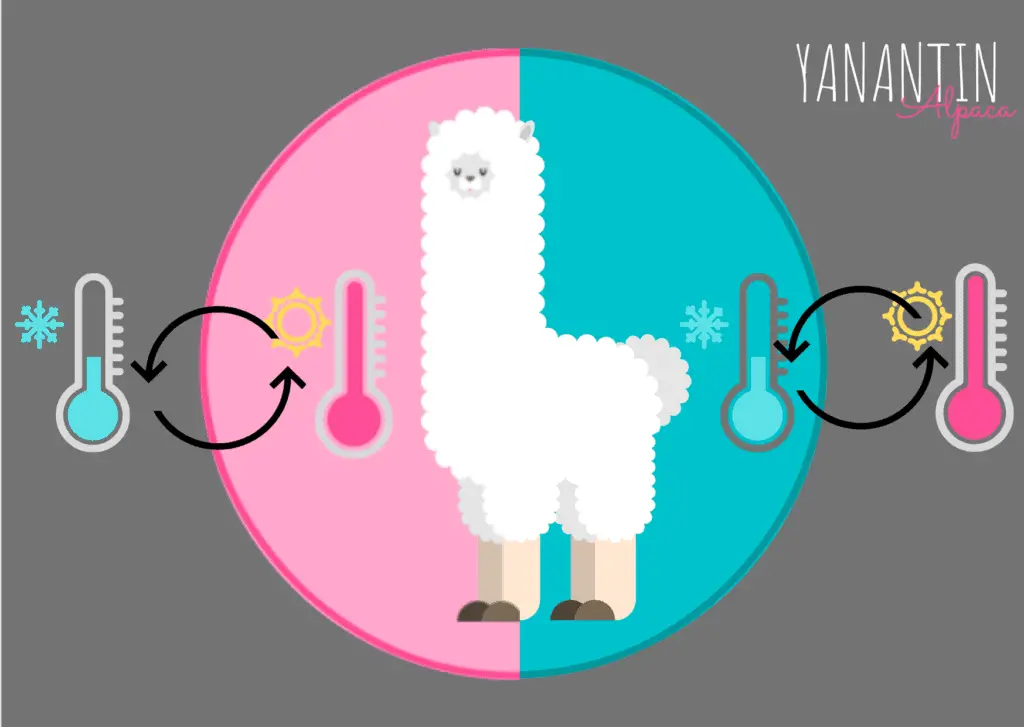
Humans are warm-blooded and the body temperature stays pretty constant. Our bodies work to cool down when we’re overheating, and to warm up when we’re cold.
Now, even though we can regulate our body temperature, our system is not infallible: hyperthermia and hypothermia will occur when our bodies are exposed to extreme temperatures for a sustained period of time.
It is nice to know that when it is really cold or hot we have protective clothing to help us out.
When our bodies can use that extra hand, alpaca wool comes to the rescue with its thermoregulating capabilities.
- When it is cold outside, alpaca wool will keep you warm at a consistent temperature (close to your own body temperature), without letting the cold take over.
- When it is warm outside, alpaca wool will keep you cool (also body temperature), without letting the heat warm you up.
How Can Alpaca Wool Be Breathable, Isolating and Insulating at the Same Time?
As I was reading about the thermoregulatory capabilities of alpaca wool, I started wondering how something that is so isolating and insulating can actually be breathable at the same time? The answer is… the hollow fiber.
Alpaca Wool Has a Hollow Fiber
Your human instinct will probably tell you that something that is isolating and insulating must be stifling, clammy or broiling hot. But alpaca wool is not called the fiber of the gods for nothing. It is neither of that thanks to its hollow fiber.
According to Science Learning Hub, most woolen fibers are hollow inside. A hollow fiber can trap air within, creating an airy, fluffy, springy yarn. Alpaca is different from other fibers because it does not have just one “airbag”, but several micro airbags, that all serve to trap the air.
This type of hollow fiber allows alpaca yarn to have more superior qualities than sheep’s wool, like its breathability. Even though sheep’s wool can be called breathable (compared to synthetic fibers), it is not as breathable as alpaca wool.
Alpaca Wool Is Superior to Many Other Fibers
To explain why this happens, you must know that wool in general absorbs air and evaporates it. It traps the air to keep you warm. It releases the air to cool you down. It’s like a heater that you turn off (let go of the air) and on (trapping the air) to match your temperature.
- Since alpaca wool has smaller air pockets than sheep’s wool, it is easier for alpaca wool to adjust to changes in temperature.
Imagine you’re wearing a sweater, it gets too hot and sweaty, damp, and hot air accumulates on the inside of the sweater. This would be the broiling effect that occurs when a garment is not breathable.
Turn that imagined sweater into an alpaca woolen piece: the sweat and damp get absorbed by the fiber and are trapped inside. Because the air pockets in the fiber are small, the air is easily evaporated and sent back into the atmosphere. You will not feel clammy. You will not feel sweaty. You will not feel broiling inside an alpaca woolen sweater.
Of course, the same applies to hats, scarves, thermal underwear, socks, coats, duvets, etc. etc. Ready for your own breathable piece?! Check out the Yanantin Products!
The alpaca fiber has superior breathability.
When Is Breathability Important?
You might wonder why you want garments to be breathable. Here is a small list of circumstances in which breathability is important.
For the full article I recommend this other article I wrote: 23 Things Alpaca Wool Can Be Used For
Hiking
Alpaca wool is great for hiking.
Imagine you are hiking in the mountains, and even though it could be cold and windy up high, you might be feeling hot because of the reduced level of oxygen, a beaming sun or the physical activity.
An alpaca woolen garment will protect you from the beaming sun and cold winds (isolating), it will keep you warm even though it is cold (insulating), physical activity might make you sweaty, and sweating on top of a mountain is not a smart idea (imagine the cold once the sweat gets absorbed by the fabric). A breathable piece like alpaca wool will be able to absorb sweat and evaporate it before it makes you wet and cold.
Read the full article I wrote about this topic here: Can You Go Hiking With Alpaca Wool?
Sleeping
An alpaca woolen duvet is great for sleeping.
Always hot in bed? If you’re sweating a lot in your sleep, consider an alpaca woolen duvet. You will feel warm (insulating) in a fresh room (isolating), and the high level of breathability can help prevent feeling clammy or sweaty in bed as any damp or sweat will be absorbed and send back into the atmosphere quickly.
Skiing
Alpaca woolen garments (thermals, socks, sweaters) are great for skiing.
Just like hiking, skiing is an intense physical activity that is done in cold atmospheres. You are going to need something breathable to get down the slopes without being soaked at the bottom. At the same time, you will need good protective clothing that keeps you warm and protects you from the cold.
Besides being breathable, alpaca wool also has great water wicking capabilities. When it snows or if you fall (or like to make snow angels, like me) alpaca wool will wick it away before it has the opportunity to melt into your neck.
Read the full article I wrote about this topic here: Can You Go Skiing With Alpaca Wool?


